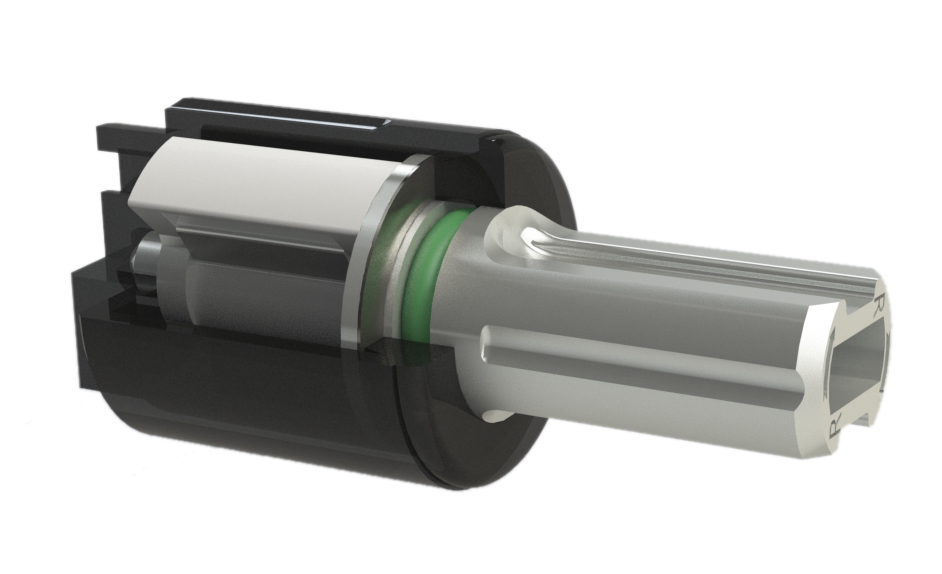
The case temperature of the Yangtze River Weighing Truck Scale case affects the internal resistance of the battery and discharges it at an ambient temperature of 0°C to 30°C. The internal resistance of the battery decreases as the temperature increases. Conversely, when the battery temperature decreases, the internal resistance of the battery gradually increases. The internal resistance and the temperature change linearly. Therefore, the battery discharge working temperature is in the range of 0°C to 30°C. The conductivity of the electrolyte is good. At the same time, the diffusion rate of hydrogen ions and sulfate ions in the electrolyte to the active material is also high, not only improving Concentration polarization effect, but also to improve the electrode reaction speed, and further improve the impact of electrochemical polarization, so the battery discharge increased.
When the ambient temperature drops below 0°C, the internal resistance increases by approximately 15% for each 10°C decrease in temperature, because the viscosity of the sulfuric acid solution increases, so the specific resistance of the sulfuric acid solution increases, and the effect of electrode polarization increases. Battery capacity It will be significantly reduced.
The effect of temperature on charge and discharge is repeated when the discharge and low-voltage constant-voltage charge are repeated. Since the battery initially has heat conduction, the temperature is not high. If the charge-discharge cycle is repeated, the temperature of the electrolyte will be very high.
If charged at low temperature, the diffusion current density is significantly reduced, and the exchange current density is not much reduced, so the concentration polarization is increased, which leads to a decrease in charging efficiency. On the other hand, the last discharge of lead sulfate at low temperature saturation The degree of resistance increases the charge and discharge resistance of the battery, thereby further reducing the charging efficiency.
If the battery is charged at an ambient temperature above 10°C, the polarization will be significantly reduced, the dissolution rate and solubility of lead sulfate will be increased, and the diffusion rate of oxygen will increase at higher temperatures. Battery charge and discharge efficiency increases.
The internal structural design is vane, Vane Damper is more suitable for soft close. ABD vane dampers are used to dampen drives, control speed, and many other applications. The damping direction of the vane dampers with continuous rotation can be clockwise, counter clockwise, or in both directions. Vane dampers are widely used in automobile interior decoration, household electric appliances, furniture and bathroom products, etc. Our dampers can make the movement of structures soft, quiet and safe to mitigate the impact, avoid the damage, increase the mechanical life, reduce noise, and improve product quality.
When the axis of rotation is moving, the blades that are connected to the axis of rotation rotate at the same time. The silicone oil in the oil chamber is squeezed between the blade andthe body to the back of the blade. The resistance formed by the pressure of the silicone oil to the area of the blade is the damping torque of the rotating shaft and the blade. The torque generated during rotation is determined by the oil viscosity, the pressure area of the blade and the clearance between the blade and the body.

NOTE:
1. Please contact the corresponding product engineer for specific torque products.
2.The Standard of completion closing:the angle is 90° between Shaft A and Shaft B.
3.It is closing position to assemble the shaft into the housing.
4. Max. cycle rate: 3 cycles/min(Clockwise110 °, 110 ° anti-clockwise for 1 cycle)
5.Operating temperature:0~40℃
6.Storage temperature:-10~60℃

Soft closing time test: Measure the closing time from angle 70 to 0.
Rated Torque (T).
Test Temperature: 23±2℃.
Durability test:
Test Method: From the closing position to opening position, push back to 70°, soft close from 70° to 0°.
Rated Torque (T).
Operation Angle: 0°~110°.
Test Temperature: 23±2℃.
Durability test cycle: 50,000 cycles. The result of product test )>2s.
Vane Damper
Vane Damper,High Temperature Dampers,Toilet Seat Vane Damper,Soft Down Damper,Storage Boxes Vane Damper
Shenzhen ABD Equipment Co., Ltd. , http://www.abddamper.com
